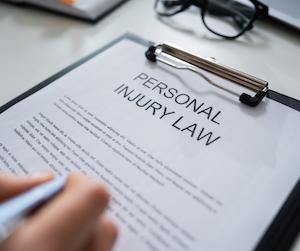Smiles Fool You.
We WIN Legal Fights!

In the aftermath of an accident, victims often find themselves overwhelmed and unsure of what steps to take next. Personal injury claims are a crucial part of seeking justice and compensation for these unforeseen circumstances. Understanding the nuances of this legal process is essential for anyone grappling with the aftermath of an injury in Texas.
Personal injury claims hinge on identifying negligence, which is the failure to act responsibly and, as a result, causing harm to another person. Victims may be entitled to various types of damages, ranging from economic losses like medical bills to non-economic damages such as pain and suffering. Moreover, Texas employs a comparative fault system that can affect the compensation a victim ultimately receives.
This step-by-step guide will help you navigate the Texas personal injury claim process. From seeking medical attention to the importance of documenting the incident, we will cover the essential actions you should take to protect your rights after sustaining an injury. With this knowledge, you can approach your case with confidence.
Personal injury claims in Texas arise when someone suffers harm due to another person’s negligence or wrongful actions. Common examples include car accidents, slip and falls, and medical malpractice.
By understanding these elements, individuals can determine if they have a viable case. Always consult with a personal injury lawyer to evaluate your situation.
In Texas, negligence is a key factor in personal injury cases. It occurs when someone fails to act with reasonable care, causing harm to another person.
For a successful personal injury claim, the injured party must prove four elements of negligence:
In a courtroom, demonstrating these elements establishes fault. Negligence can vary in severity, from minor mistakes to gross negligence. Proving negligence helps ensure victims receive fair compensation. Understanding these principles is essential for navigating personal injury claims in Texas.
In personal injury cases, victims can seek compensation through two main types of damages: economic and non-economic. Understanding these can help victims know what losses they might recover.
Economic damages cover financial losses that happen because of an injury. These are usually easier to calculate. Common types of economic damages include:
Non-economic damages address losses that are harder to quantify. They focus on the emotional and physical impact of an injury. Common types include:
These damages recognize the deeper, less tangible effects an injury can have on a person’s life. They aim to compensate for experiences that money can’t always fix.
Understanding comparative fault is key for personal injury cases in Texas. In Texas, the “modified comparative fault” rule is used. This means that if you’re injured in an accident and partly at fault, your compensation may be reduced.
Here’s how it works:
For example, if your damages total $10,000 and you are found 20% at fault, you would receive $8,000.
It’s important to understand your role in an accident. Always consult with a lawyer who can help navigate these rules. They can argue your case and aim to lessen your share of fault. Understanding this can help you know what to expect if you’re ever in an accident in Texas.
If you get hurt in an accident, taking the right steps is crucial. This can affect your health and any potential legal case. Here are the key steps to follow if you suffer a personal injury.
The first thing to do is seek medical care. Even if you feel fine, some injuries are not obvious right away. Go to the doctor or hospital as soon as possible. This ensures your well-being and creates a record of your injuries. Having medical records is important if you decide to seek compensation later.
Make sure to document everything about the incident. Take photos of the scene and your injuries. Write down details about how the accident happened. Collect contact information of any witnesses. Pictures and notes can serve as valuable evidence, making it easier to support your claims.
After you’ve received medical attention and documented what you can, reach out to a lawyer. An experienced attorney can guide you through the legal process. They can help you understand your rights, evaluate your case, and advise on the best course of action. A lawyer’s expertise is key in navigating the complexities of personal injury laws in Texas.
An experienced personal injury attorney in Harris County, Galveston County, Fort Bend County, Montgomery County, Brazoria County, Houston, Sugar Land, Missouri City, and Stafford, Texas at Thornton Esquire Law Group, PLLC will take over the case from the very beginning and make sure that you receive fair compensation for your injuries. A personal injury lawyer will help you recover medical expenses, lost wages, pain and suffering, and other losses due to the accident. Contact us today at www.thorntonesquirelawgroup.com for a free case evaluation consultation.